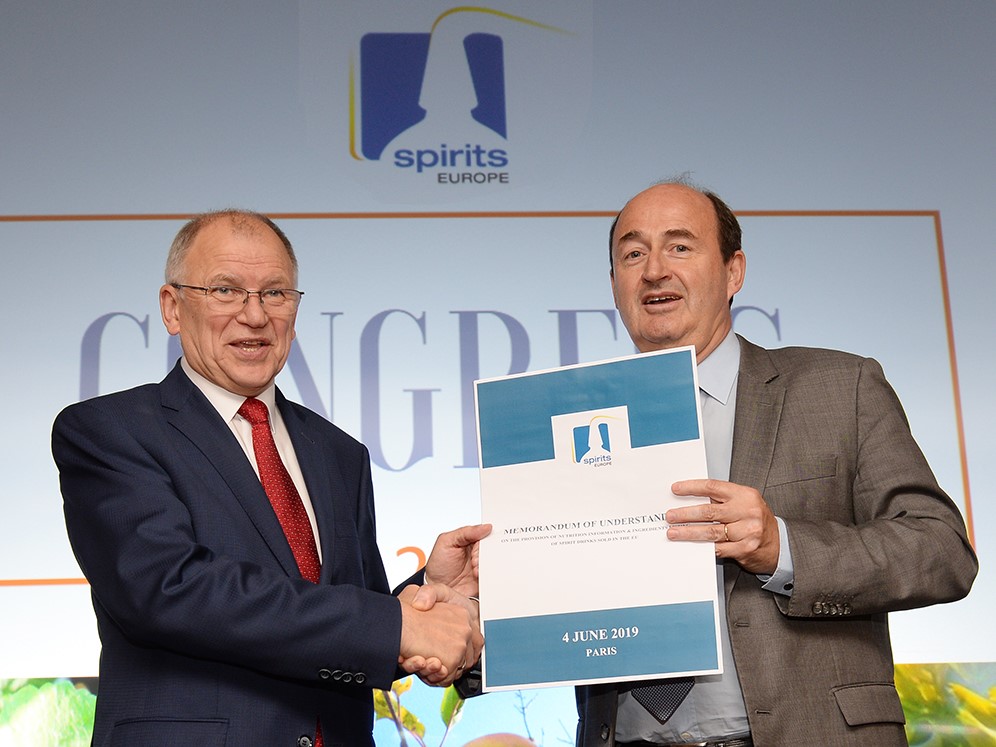When the EU food labelling rules were adopted (FIC Regulation 1169/2011), alcoholic beverages were exempted from certain aspects of the Regulation: while being fully part of the food and beverages sector, it was acknowledged that alcoholic beverages require a marginally different treatment than other foods with regards to the labelling of energy and listing of ingredients.
While waiting for the EU to amend the FIC Regulation and to review food information rules for alcoholic beverages, the spirits sector – in close cooperation with the European Commission – decided to develop an ambitious self-regulatory approach to provide consumers with nutrition information and ingredient lists. As a result, on 4 June 2019, spiritsEUROPE signed the Memorandum of Understanding (MoU) in which the sector made an ambitious, three-tier commitment to provide:
The signature ceremony took place on 4 June 2019 in the presence of EU Health Commissioner Vytenis Andriukaitis (Press release with Q&As).

Commissioner Andriukaitis and Christian Porta, President of spiritsEUROPE - 4 June 2019 - Paris
Following the roll-out foreseen in the MoU, in 2022, the sector reported having met the target of 66% of all SKUs (per volume, not value) bearing nutrition information on labels and a rapidly rising share of products with QR codes providing ingredient lists on-line. The details of the roll-out are available in the MoU progress report (below), as published and submitted to the European Commission. Based on the success and conviction that more can be done, spiritsEUROPE continues to report on roll-out on an annual basis.
The latest report published on 18 June 2024 shows that the share of spirits with on-pack energy information has steadily grown, with over 70% of the total EU market volume expected to include it by year-end. The MoU remains strong, with more small and medium producers joining, and two national associations adding their signatures. The eight international companies involved reported an average of 83% compliance, reaching 100% in some cases. Duty-free shops also saw higher rates. Additionally, digital consumer information via QR codes is becoming common, with nearly 40,000 e-labels created since U-label’s launch in September 2022 and wide adoption expected by 2025.

What’s Next? We need harmonised EU consumer information rules

Read more: